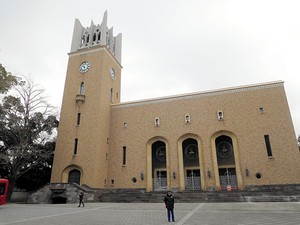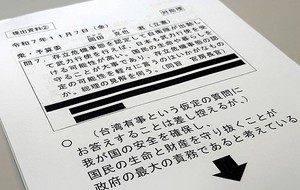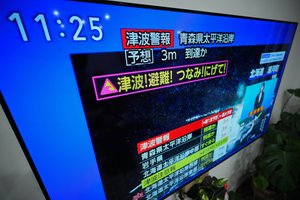May 19, 2021 at 12:17 JST
 Prime Minister Yoshihide Suga, second from right, meets with and apologizes to the plaintiffs at the prime minister's office in Tokyo on May 18. (Koichi Ueda)
Prime Minister Yoshihide Suga, second from right, meets with and apologizes to the plaintiffs at the prime minister's office in Tokyo on May 18. (Koichi Ueda)
Fair and appropriate compensation must be paid without delay to all the people who have suffered for too long.
In its first united ruling over lawsuits filed around the nation by former construction workers and others who developed mesothelioma, lung cancer and other health issues from inhaling asbestos, the Supreme Court on May 17 held the state and building material makers responsible and ordered them to pay compensation to the plaintiffs.
The court pointed out that the state was aware of the dangers of asbestos, but neglected to take action, such as requiring workers to wear dust masks, for nearly 30 years.
The ruling also concluded that even though independent construction workers who operate their own businesses do not fall under the legal category of "workers," they should still be protected under the nation's Industrial Health and Safety Law.
This decision was based on the understanding that the effects of asbestos on the human body are the same for everyone, irrespective of their legal standing. This is a fair call that is completely in line with the reality of the situation.
Building material makers were held responsible for failing to alert users to the dangers of asbestos.
Called a "silent time bomb," it takes victims decades to develop symptoms of asbestos poisoning, rendering it practically impossible to determine when the health damage was caused, and by which specific product.
For this reason, some building material makers were acquitted in the past by district and appellate courts.
But the Supreme Court ruled that every one of the defendant companies must compensate the plaintiffs by association, based on a flexible interpretation of the Civil Code's tort law that provides for cases where an illegal act was committed collectively but it was not clear exactly which party/parties were actually responsible for the damage done.
This was really significant, in that the top court correctly assessed the nature of the damage and did not let the defendants escape their corporate responsibility.
Following the verdict, Prime Minister Yoshihide Suga met with and apologized to the victims and the bereaved families of the deceased.
With respect to lawsuits that are still ongoing, the state and the plaintiffs agreed on a payment of up to 13 million yen ($119,280) in compensation per victim out of court, as well as for the establishment of a compensation fund for victims who have not gone to court.
It was certainly a step in the right direction that a specific plan for bringing a swift out-of-court resolution has started moving forward.
However, a major problem remains. Building material makers have yet to come on board with this plan. Negotiations are not going smoothly on the allocation of financial responsibilities among the companies.
So long as businesses that kept profiting from their asbestos products are allowed to look the other way, the public will never be satisfied.
The defendants in the lawsuits were not the only companies that neglected to alert the public to the dangers of asbestos.
It is only logical that every business that has made and sold this substance should acknowledge its responsibility and contribute its fair share to the compensation fund.
Unless they do so, the amount of compensation payments to the victims will remain only half of the projected level, which is far from what can be considered satisfactory.
The government not only needs to pressure the industry harder, but also keep considering alternative solutions in the event the industry refuses to cooperate.
Bringing a full solution to the problem is an urgent task if justice is to be done for the people who worked on construction sites to support the nation's economic growth and are now suffering.
--The Asahi Shimbun, May 19




















A peek through the music industry’s curtain at the producers who harnessed social media to help their idols go global.
A series based on diplomatic documents declassified by Japan’s Foreign Ministry
Here is a collection of first-hand accounts by “hibakusha” atomic bomb survivors.
Cooking experts, chefs and others involved in the field of food introduce their special recipes intertwined with their paths in life.
A series about Japanese-Americans and their memories of World War II